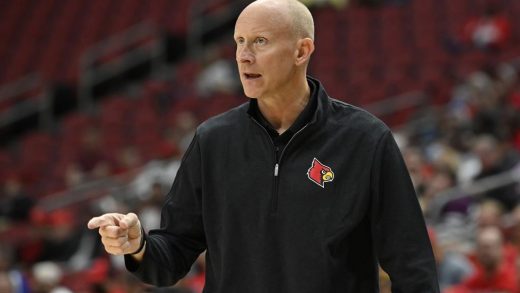Q&A: Ludwig Göransson talks Rihanna, Mayan music, new series
:format(webp)/https://www.thestar.com/content/dam/thestar/entertainment/2023/02/28/qa-ludwig-gransson-talks-rihanna-mayan-music-new-series/20230228140244-63fe59dc8c2f8a2145b9fc05jpeg.jpg)
GLENDALE, Calif. (AP) — Ludwig Göransson initially felt tremendous pressure in composing new music for “Black Panther: Wakanda Forever,” with hopes of living up to his Oscar-winning score on the franchise’s 2019 epic first film.
But instead of dwelling in his successful past, Göransson focused on pushing the sequel’s future forward with fresh tunes entirely inspired by the film’s storyline. With just a script in hand, the Swedish composer flew to Mexico City where he spent time with a music archaeologist to reimagine Mayan music. He later jetted to Lagos, Nigeria, with college friend-director Ryan Coogler to build up the African soundscape for the soundtrack.
After returning to the U.S., Göransson and Coogler received some good news: Rihanna had agreed to lend her vocals on “Lift Me Up,” which was written as a tribute to the late “Black Panther” star Chadwick Boseman, who died from cancer in 2020. The music superstar will perform the ballad – nominated for best original song – during the 2023 Academy Awards on March 12. She created the song with Göransson, Coogler and Nigerian singer-songwriter Tems, who also performed Bob Marley’s “No Woman, No Cry” for the film’s trailer.
In a recent interview, Göransson spoke with The Associated Press about landing Rihanna for “Lift Me Up,” reimagining Mayan music in two weeks and his involvement with “Voices Rising: The Music of Wakanda Forever,” a three-episode series streaming Tuesday on Disney+. He’s featured in the series that delves into the creation of the film’s score and soundtrack, which he produced. __ AP: With the film’s new storyline after Boseman’s death, when did you figure out your musical direction?
GÖRANSSON: I didn’t fully know where to start until after having a conversation with Ryan about Namor and Talokan — the origin story of their tribe and Mayan culture. I told Ryan “I have to make this as truthful as possible.” I knew the Mayan music, traditions, culture, books were all forcibly gone. It was forcibly erased. Music in other countries that were colonized didn’t disappear. In West Africa, the tradition of the music goes on, being passed down from generation to generation. That didn’t happen in Mayan culture. It was an obliteration of a culture. So, we didn’t know exactly what the music sounded like. But there are experts that do research in that field in Mexico.
AP: What was your experience like working with the experts there and uncovering some of the erased Mayan music from 500-plus years ago?
GÖRANSSON: I call them music art archaeologists. They’ve been devoting their whole life to finding a lot of the instruments in graves. You can look at the instruments, like the flutes for example, and you can see the fingerprints, and which holes have been used the most. You can see the intervals have been used the most. You can kind of reimagine the sound. You can also study the codex, the wall paintings and see pictures of different formations of musicians like five people playing turtle shells and people behind them blowing their horns. A lot of these fascinating instruments I’ve never seen or even heard of before. But they all derive from nature like seashells, even turtle shells, different flutes, clay flutes, etc. One that stood out to me was a flute called The Flute of Truth, which was a flute that’s almost like a dog whistle, but 100 times louder for humans. If you played it for someone, they would tell the truth because it was almost like torture.
AP: How did the instruments play a role in “Wakanda Forever”?
GÖRANSSON: The seashell is very conch. It became a very significant part of Namor’s sound. There was also a whistle called the Death Whistle, which was played during Namor’s crazy action scenes to show his power moves. (Göransson plays the whistle). It almost sounds like a scream.
AP: Was Rihanna you and Coogler’s first and only choice to collaborate with on “Lift Me Up”?
GÖRANSSON: She was one of the first people we had in mind for the movie. But we also had to take into consideration that we both knew that she hasn’t released music in six years at the time. She has an empire. I think we also knew she was about to have a baby. So we’re like “OK, well, the chances of this actually happening are slim. There was a lot of challenges.”
AP: How did everything come together with Rihanna and the song?
GÖRANSSON: We reached out. I’ve been fortunate to be working with her management team at Roc Nation. I reached out and started having dialogue. But we didn’t hear anything for a while. We all kind of thought, “Well, maybe she’s having her baby now.” Me and Ryan went to Nigeria. We took this trip. We started writing. I had this idea for “Lift Me Up” a longtime ago to make it like a lullaby. The first person I asked to write about it was Ryan. He started writing the lyrics. I don’t think he’s ever written a song before. But with him being so close to the subject and being such a great writer, I never doubted he would come up with something incredible. When he had the hook and the line, we started recording with Tems. She also added and wrote a beautiful verse to it. Then we flew back to L.A. and eventually the time was right. We were able to show Rihanna the movie. It wasn’t the final cut, but Rihanna really connected with the story. She really connected with the film. With Ryan’s vision, we were able to go into the studio together, write and finish “Lift Me Up.” She’s such a perfectionist. The time we spent on it really amazed me.
AP: You produced the score and soundtrack along with your composer duties. How was it for you to juggle everything?
GÖRANSSON: That was insane. But literally like two jobs. It was extreme, but so necessary and made it easier too because I was able to take elements from the songs into the score, and elements from the score to the songs. It just warped together into one singular thing. It doesn’t feel like it’s two different worlds. It feels like one sound.
AP: What do you want viewers to take away from the “Voices Rising” series airing Tuesday?
GÖRANSSON: All the songs were written for the movie. Every lyric. Every instrument you hear is custom for the movie. The way you hear the songs play in the movie. It’s not like you hear a snippet here and there. It’s the whole song. We captured that whole process of how I went to Mexico. Before going there, Ryan and I were listening to artists and their voices and what they were saying. We were thinking about the script and what voice would fit in the movie. When I went to Mexico, I didn’t have a movie to work on. We just had a script. I invited artists to come to the studio. We were sitting down talking about certain scenes and started writing the songs. I got to know the artists and their backgrounds. I learned about the Mexican musical scene. We have that whole process filmed and documented. The songs basically came from scratch to fully-fleshed songs in the movie.
___
For more coverage of this year’s Oscars, visit: https://apnews.com/hub/academy-awards
JOIN THE CONVERSATION
does not endorse these opinions.
Credit: Q&A: Ludwig Göransson talks Rihanna, Mayan music, new series


